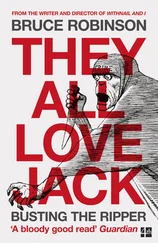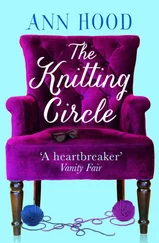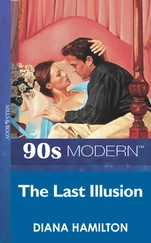Bruce Hood - The Self Illusion
Здесь есть возможность читать онлайн «Bruce Hood - The Self Illusion» весь текст электронной книги совершенно бесплатно (целиком полную версию без сокращений). В некоторых случаях можно слушать аудио, скачать через торрент в формате fb2 и присутствует краткое содержание. ISBN: , Издательство: Constable & Robinson, Жанр: Старинная литература, на английском языке. Описание произведения, (предисловие) а так же отзывы посетителей доступны на портале библиотеки ЛибКат.
- Название:The Self Illusion
- Автор:
- Издательство:Constable & Robinson
- Жанр:
- Год:неизвестен
- ISBN:9781780331379
- Рейтинг книги:5 / 5. Голосов: 1
-
Избранное:Добавить в избранное
- Отзывы:
-
Ваша оценка:
- 100
- 1
- 2
- 3
- 4
- 5
The Self Illusion: краткое содержание, описание и аннотация
Предлагаем к чтению аннотацию, описание, краткое содержание или предисловие (зависит от того, что написал сам автор книги «The Self Illusion»). Если вы не нашли необходимую информацию о книге — напишите в комментариях, мы постараемся отыскать её.
The Self Illusion — читать онлайн бесплатно полную книгу (весь текст) целиком
Ниже представлен текст книги, разбитый по страницам. Система сохранения места последней прочитанной страницы, позволяет с удобством читать онлайн бесплатно книгу «The Self Illusion», без необходимости каждый раз заново искать на чём Вы остановились. Поставьте закладку, и сможете в любой момент перейти на страницу, на которой закончили чтение.
Интервал:
Закладка:
39. S. Levine, D. F. Johnson and C. A. Gonzalez, ‘Behavioral and hormonal responses to separation in infant rhesus monkeys and mothers, Behavioral Neuroscience , 99 (1985), 399–410.
40. M. C. Larson, M. R. Gunnar and L. Hertsgaard, ‘The effects of morning naps, car trips and maternal separation on adrenocortical activity in human infants’, Child Development , 62 (1991), 362–72.
41. P. S. Zeskind and B. M. Lester, ‘Analysis of infant crying’, in L. T, Singer and P. S. Zeskind (eds), Biobehavioral Assessment of the Infant (New York, NY: Guilford, 2001), 149–66.
42. Baby It’s You: The First Three Years , Emmy Award-winning series produced by Wall to Wall for UK’s Channel 4 (1994).
43. J. Bowlby, Attachment and Loss, Vol. 1 Attachment (London: Hogarth Press 1969).
44. R. A. Spitz, ‘Motherless infants’, Child Development , 20 (1949),145–55.
45. M. D. S. Ainsworth, ‘Infancy in Uganda: Infant care and the growth of love’, (Baltimore, MD: John Hopkins University Press, 1967).
46. M. D. S. Ainsworth, M. C. Blehar, E. Waters and S. Wall, Patterns of Attachment: A Psychological Study of the Strange Situation (Hillsdale, NJ: Erlbuam, 1978).
47. M. H. van IJzendoorn and P. M. Kroonenberg, ‘Cross-cultural patterns of attachment: A meta-analysis of the strange situation’, Child Development , 59 (1988), 147–56.
48. J. Kagan, ‘Temperament and the reactions to unfamiliarity’, Child Development , 68 (1997), 139–43.
49. C. Hazan and P. Shaver, ‘Romantic love conceptualized as an attachment process’, Journal of Personality and Social Psychology , 52 (1987), 511–24.
50. J. A. Simpson, ‘Influence of attachment style on romantic relationships’, Journal of Personality and Social Psychology , 59 (1990), 971–80.
51. H. Lane, The Wild Boy of Aveyron (Cambridge, MA: Harvard University Press, 1979).
52. J. M. G. Itard, An Historical Account of the Discovery and Education of a Savage Man or of the First Developments, Physical and Moral of the Young Savage Caught in the Woods Near Aveyron in the Year 1798 (London: Richard Phillips, 1802), 17.
53. G. Bremner, Infancy (2nd ed., Oxford: Wiley-Blackwell, 2004), 2.
54. P. E. Jones , ‘Contradictions and unanswered questions in the Genie case: A fresh look at the linguistic evidence’, Language and Communication , 15 (1995), 261–80.
55. U. Firth, Autism: Explaining the Enigma (2nd ed., Oxford: Wiley-Blackwell, 2003).
56. Alvin Powell, interview with Chuck Nelson, ‘Breathtakingly awful’, Harvard Gazette (5 October 2010).
57. D. E. Johnson, D. Guthrie, A. T. Smyke, S. F. Koga, N. A. Fox, C. H. Zeanah and C. A. Nelson, ‘Growth and associations between auxology, caregiving environment, and cognition in socially deprived Romanian children randomized to foster vs ongoing institutional care’, Archives of Pediatrics and Adolescent Medicine , 164 (2010), 507–516.
58. M. Rutter, T. G. O’Connor and the English and Romanian Adoptees (ERA) Study Team, ‘Are there biological programming effects for psychological development? Findings from a study of Romanian adoptees’, Developmental Psychology , 40 (2004), 81–94.
59. H. F. Harlow and M. L. Harlow, ‘The affectional systems’, in A. M. Schrier, H. F. Harlow and F. Stollnitz (eds), Behavior of Nonhuman Primates , vol. 2 (New York, NY: Academic Press, 1965).
60. T. Field, M. Hernandez-Reif and J. Freedman, ‘Stimulation programs for preterm infants’, Social Policy Report , 18 (2004), 1–19.
61. D. O. Hebb, ‘The effects of early experience on problem solving at maturity’, American Psychologist , 2 (1947), 306–7.
62. J. T. Cacioppo, J. H. Fowler and N. A. Christakis, ‘Alone in the crowd: The structure and spread of loneliness in a large social network’, Journal of Personality and Social Psychology , 97 (2009), 977–91.
63. H. Ruan and C. F. Wu, ‘Social interaction-mediated lifespan extension of Drosophila Cu/Zn superoxide dismutase mutants’, Proceedings of the National Academy of Sciences of the United States of America , 105: 21 (2008), 7506–10.
64. R. S. Kempe and C. H. Kempe, Child Abuse (Cambridge, MA: Harvard University Press, 1978).
65. D. G. Dutton and S. Painter, ‘Emotional attachments in abusive relationships. A test of traumatic bonding’, Violence and Victims , 8 (1993), 105–120.
66. G. A. Morgan and H. N. Ricciuti, ‘Infants’ responses to strangers during the first year’, in B. M. Foss (ed.), Determinants of Infant Behaviour, vol. 4 (London: Methuen, 1967).
67. A. N. Meltzoff, P. K. Kuhl, J. Movellan and T. J. Sejnowski, ‘Foundations for a new science of learning’, Science , 325 (2009), 284–8.
68. A. N. Meltzoff, ‘Infant imitation and memory: Nine-month-olds in immediate and deferred tests’, Child Development , 59 (1988), 217–25.
69. G. Gergely, H. Bekkering and I. Király, ‘Rational imitation of goal directed actions in preverbal infants’, Nature , 415 (2002), 755.
70. A. N. Meltzoff and R. Brooks, ‘Self-experience as a mechanism for learning about others: A training study in social cognition’, Developmental Psychology , 44 (2008), 1257–65.
71. S. Itakura, H. Ishida, T. Kanda, Y. Shimada, H. Ishiguro and K. Lee, ‘How to build an intentional android: Infants’ imitation of a robot’s goal-directed actions’, Infancy , 13 (2008), 519–32.
72. V. Gallese, L. Fadiga, L. Fogassi and G. Rizzolatti, ‘Action recognition in the premotor cortex’, Brain , 119 (1996), 593–609.
73. V. Gallese, M. A. Gernsbacher, C. Heyes, G. Hickok and M. Iacoboni, ‘Mirror Neuron Forum’, Perspectives on Psychological Science , 6 (2011), 369–407.
74. This claim was made by the eminent neuroscientist Vilayanur Ramachandran and is related in C. Keysers, The Empathic Brain (Los Gatos, CA: Smashwords e-book, 2011).
75. D. T. Neal and T. L. Chartrand, ‘Embodied emotion perception: Amplifying and dampening facial feedback modulates emotion perception accuracy’, Social Psychological and Personality Science (2011): doi:10.1177/1948550611406138.
76. S.-J. Blakemore, D. Bristow, G. Bird, C. Frith and J. Ward, ‘Somatosensory activations during the observation of touch and a case of vision-touch synaesthesia’, Brain , 128 (2005), 1571–83.
77. J. Ward, The Frog Who Croaked Blue: Synesthesia and the Mixing of the Senses (London: Routledge, 2008).
78. M. J. Richardson, K. L. Marsh, R. W. Isenhower, J. R. L. Goodman and R. C. Schmidt, ‘Rocking together: Dynamics of intentional and un-intentional interpersonal coordination’, Human Movement Science , 26 (2007), 867–91.
79. M. S. Helt, I.-M. Eigsti, P. J. Snyder and D. A. Fein, ‘Contagious yawning in autistic and typical development’, Child Development , 81 (2010), 1620–31.
80. T. J. Cox, ‘Scraping sounds and disgusting noises’, Applied Acoustics , 69 (2008), 1195–1204.
81. O. Sacks, The Man Who Mistook His Wife for a Hat (New York, NY: Harper Perennial, 1987), 123.
3 The Looking Glass Self
1. C. H. Cooley, Human Nature and the Social Order (New York, NY: Scribner’s, 1902).
2. N. Breen, D. Caine and M. Coltheart, ‘Mirrored-self misidentification: Two cases of focal onset dementia’, Neurocase , 7 (2001), 239–54.
3. J. Cotard, Etudes sur les Maladies Cerebrales et Mentales (Paris: Bailliere, 1891).
4. E. C. M. Hunter, M. Sierra and A. S. David, ‘The epidemiology of depersonalisation and derealisation: A systematic review, Social Psychiatry Psychiatric Epidemiology , 39 (2004), 9–18.
Читать дальшеИнтервал:
Закладка:
Похожие книги на «The Self Illusion»
Представляем Вашему вниманию похожие книги на «The Self Illusion» списком для выбора. Мы отобрали схожую по названию и смыслу литературу в надежде предоставить читателям больше вариантов отыскать новые, интересные, ещё непрочитанные произведения.
Обсуждение, отзывы о книге «The Self Illusion» и просто собственные мнения читателей. Оставьте ваши комментарии, напишите, что Вы думаете о произведении, его смысле или главных героях. Укажите что конкретно понравилось, а что нет, и почему Вы так считаете.












